-
 Bitcoin
Bitcoin $106,731.2224
-1.05% -
 Ethereum
Ethereum $2,444.9804
-1.20% -
 Tether USDt
Tether USDt $1.0003
0.01% -
 XRP
XRP $2.1882
0.09% -
 BNB
BNB $651.1435
-0.61% -
 Solana
Solana $148.3252
-2.09% -
 USDC
USDC $1.0000
0.01% -
 TRON
TRON $0.2787
0.55% -
 Dogecoin
Dogecoin $0.1598
-3.16% -
 Cardano
Cardano $0.5520
-2.43% -
 Hyperliquid
Hyperliquid $39.0960
-2.64% -
 Bitcoin Cash
Bitcoin Cash $516.9519
2.98% -
 Sui
Sui $2.7011
-2.95% -
 Chainlink
Chainlink $13.0582
-1.71% -
 UNUS SED LEO
UNUS SED LEO $8.9250
-2.53% -
 Stellar
Stellar $0.2359
-0.18% -
 Avalanche
Avalanche $17.3856
-3.73% -
 Toncoin
Toncoin $2.8095
-3.56% -
 Shiba Inu
Shiba Inu $0.0...01121
-1.95% -
 Litecoin
Litecoin $85.2795
-0.85% -
 Hedera
Hedera $0.1471
-2.15% -
 Monero
Monero $319.8004
1.12% -
 Dai
Dai $1.0001
0.01% -
 Ethena USDe
Ethena USDe $1.0001
0.02% -
 Bitget Token
Bitget Token $4.5344
-1.07% -
 Polkadot
Polkadot $3.3224
-2.96% -
 Uniswap
Uniswap $6.9697
-2.75% -
 Aave
Aave $266.1658
-2.25% -
 Pepe
Pepe $0.0...09414
-3.41% -
 Pi
Pi $0.4913
-3.29%
How do I view my transaction history on Gemini?
To view your transaction history on Gemini, log in, click your profile icon, and select "Transaction History" for a detailed overview of your crypto activities.
Apr 06, 2025 at 10:56 am
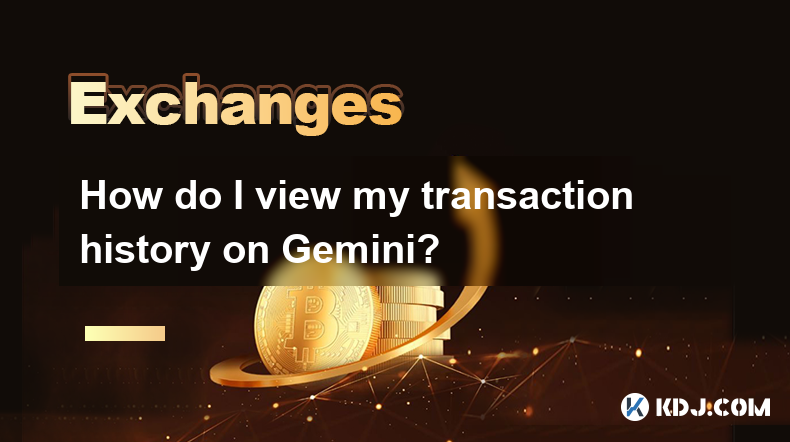
Viewing your transaction history on Gemini is a straightforward process that allows you to keep track of your cryptocurrency activities. Whether you are a seasoned trader or a beginner, understanding how to access and interpret your transaction history is crucial for managing your investments effectively. In this article, we will guide you through the steps to view your transaction history on Gemini, explain what you can expect to see, and provide tips on how to use this information to your advantage.
Accessing Your Gemini Account
To begin, you need to log into your Gemini account. If you do not have an account yet, you will need to create one by following the registration process on the Gemini website. Once you have your account set up and logged in, you can proceed to view your transaction history.
- Navigate to the Gemini website and enter your login credentials.
- Click on your profile icon located in the top right corner of the page.
- Select "Transaction History" from the dropdown menu that appears.
Understanding the Transaction History Page
Upon selecting "Transaction History," you will be directed to a page that displays a comprehensive list of all your transactions on Gemini. This page is designed to provide you with a clear and detailed overview of your trading activities.
- The transaction history page is divided into several columns, each representing different aspects of your transactions.
- Columns typically include Date, Type, Amount, Currency, and Status, among others.
- You can filter and sort the transactions by date, type, or currency to find specific information quickly.
Types of Transactions
Gemini supports various types of transactions, and understanding these can help you better manage your portfolio. Here are some common transaction types you might see in your history:
- Deposits: These are funds you have added to your Gemini account, either in cryptocurrency or fiat currency.
- Withdrawals: These are funds you have withdrawn from your Gemini account.
- Trades: These represent the buying and selling of cryptocurrencies on the Gemini exchange.
- Transfers: These are movements of funds between different accounts or wallets within Gemini.
Analyzing Your Transaction History
Your transaction history is not just a record; it's a tool that can help you analyze your trading performance and make informed decisions. Here are some ways you can use your transaction history effectively:
- Track your trading patterns: By reviewing your transaction history, you can identify trends in your trading behavior, such as frequency and types of trades.
- Monitor your gains and losses: Calculate your profits and losses by comparing the prices at which you bought and sold your cryptocurrencies.
- Identify fees: Gemini charges fees for certain transactions, and your history will show you how much you have paid in fees, helping you to manage your costs.
Exporting Your Transaction History
For more detailed analysis or for tax purposes, you might want to export your transaction history. Gemini allows you to download your transaction data in a CSV format, which can be easily imported into spreadsheet software for further analysis.
- Go to the transaction history page.
- Look for the "Export" button or a similar option, usually located at the top or bottom of the page.
- Select the date range for which you want to export the data.
- Click "Export" to download the CSV file to your computer.
Using Third-Party Tools
While Gemini provides a robust platform for viewing your transaction history, you might find it beneficial to use third-party tools for more advanced analysis. These tools can help you visualize your data, track your portfolio's performance, and even assist with tax reporting.
- Crypto tax software: Tools like CoinLedger or CryptoTrader.Tax can import your Gemini transaction history and help you calculate your tax obligations.
- Portfolio trackers: Apps like Blockfolio or Delta can sync with your Gemini account to provide real-time updates on your portfolio's value.
- Data analysis platforms: Platforms like Koinly or CoinTracking can offer detailed insights into your trading performance and help you optimize your strategies.
Security Considerations
When accessing and managing your transaction history, it's important to keep security in mind. Here are some tips to ensure your data remains safe:
- Use strong, unique passwords for your Gemini account and enable two-factor authentication (2FA) to add an extra layer of security.
- Be cautious with third-party tools: Only use reputable and well-reviewed services to avoid potential security risks.
- Regularly review your transaction history to detect any unauthorized or suspicious activities promptly.
Frequently Asked Questions
Q: Can I view my transaction history on the Gemini mobile app?
A: Yes, you can view your transaction history on the Gemini mobile app. Simply log into the app, navigate to your profile, and select "Transaction History" to access your records.
Q: How long does Gemini keep transaction history records?
A: Gemini retains transaction history records for a significant period, typically several years, to comply with regulatory requirements and to assist users with their records.
Q: Can I delete transactions from my Gemini transaction history?
A: No, you cannot delete transactions from your Gemini transaction history. The platform maintains a complete and immutable record of all transactions for transparency and compliance purposes.
Q: Is it possible to view transaction history for specific cryptocurrencies only?
A: Yes, you can filter your transaction history on Gemini to view transactions for specific cryptocurrencies. Use the filtering options on the transaction history page to narrow down your search.
Disclaimer:info@kdj.com
The information provided is not trading advice. kdj.com does not assume any responsibility for any investments made based on the information provided in this article. Cryptocurrencies are highly volatile and it is highly recommended that you invest with caution after thorough research!
If you believe that the content used on this website infringes your copyright, please contact us immediately (info@kdj.com) and we will delete it promptly.
- Deutsche Bank's Bitcoin Custody Play: A New York Minute on Crypto Services
- 2025-07-01 22:30:12
- ZachXBT, Ripple, and RLUSD Adoption: A Deep Dive
- 2025-07-01 22:30:12
- Open XP Redemption on Optimism: Get Ready for OP Tokens on July 15!
- 2025-07-01 22:35:12
- Altcoins in June 2025: Data, Trends, and What's Next for Crypto
- 2025-07-01 21:30:12
- SUI Price Breakout Watch: Will 2025 Forecasts Hit the Mark?
- 2025-07-01 21:30:12
- BTCBULL: Riding Bitcoin's Bull Run to Crypto Glory
- 2025-07-01 20:30:11
Related knowledge
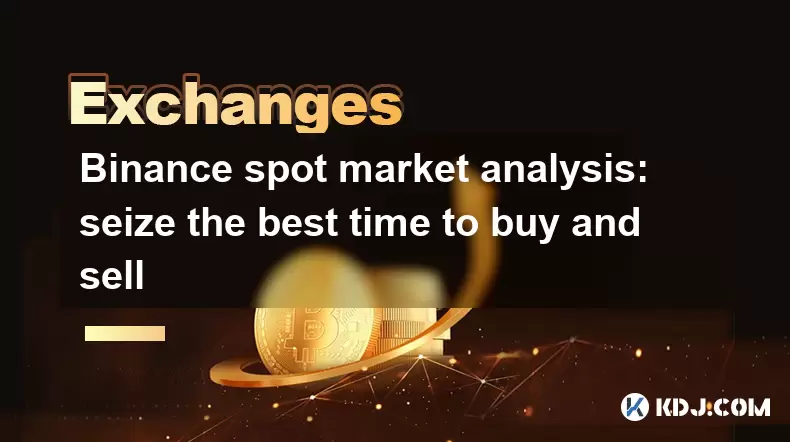
Binance spot market analysis: seize the best time to buy and sell
Jun 19,2025 at 04:56pm
Understanding the Binance Spot MarketThe Binance spot market is one of the most popular platforms for cryptocurrency trading globally. It allows users to trade digital assets at current market prices, making it essential for traders aiming to buy low and sell high. Unlike futures or margin trading, spot trading involves direct ownership of the asset aft...
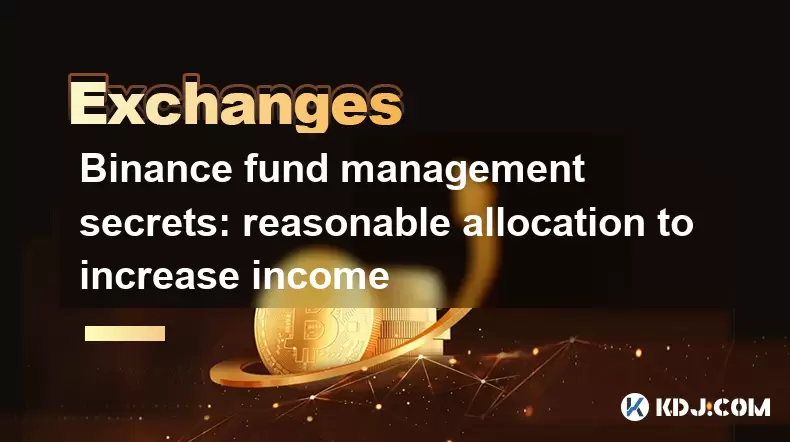
Binance fund management secrets: reasonable allocation to increase income
Jun 22,2025 at 02:29pm
Understanding Binance Fund ManagementBinance fund management involves strategic allocation of your cryptocurrency assets to optimize returns while managing risk. The key to successful fund management lies in understanding how different investment options on the Binance platform can be utilized to create a diversified portfolio. This includes spot tradin...

Binance trading pair selection skills: find the best buying and selling combination
Jun 23,2025 at 02:49am
Understanding the Basics of Trading Pairs on BinanceBefore diving into trading pair selection skills, it's essential to understand what a trading pair is. On Binance, a trading pair refers to two cryptocurrencies that can be traded against each other. For example, BTC/USDT means Bitcoin is being traded against Tether. Each trading pair has its own liqui...

Binance new coin mining strategy: participate in Launchpool to earn income
Jun 23,2025 at 11:56am
What is Binance Launchpool and how does it work?Binance Launchpool is a feature introduced by the world’s largest cryptocurrency exchange, Binance, to allow users to earn new tokens through staking. This platform enables users to stake their existing cryptocurrencies (such as BNB, BUSD, or other supported assets) in exchange for newly launched tokens. T...
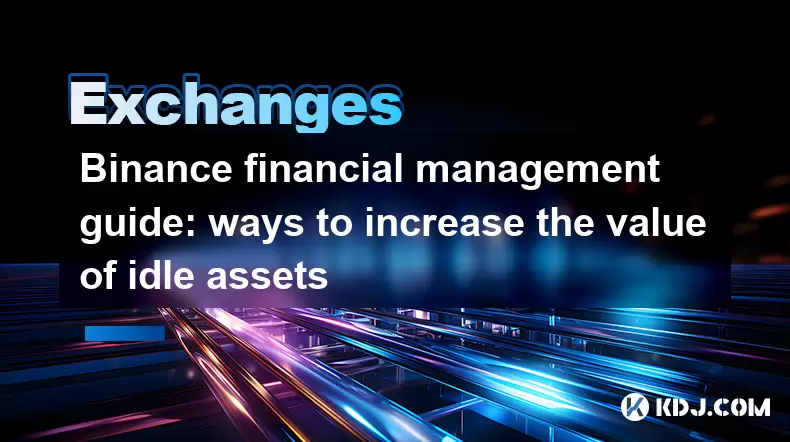
Binance financial management guide: ways to increase the value of idle assets
Jun 19,2025 at 11:22pm
Understanding Idle Assets in the Cryptocurrency SpaceIn the fast-paced world of cryptocurrency, idle assets refer to digital currencies that are not actively being used for trading, staking, or yield farming. Holding these funds in a wallet without utilizing them means missing out on potential growth opportunities. Binance, as one of the leading platfor...
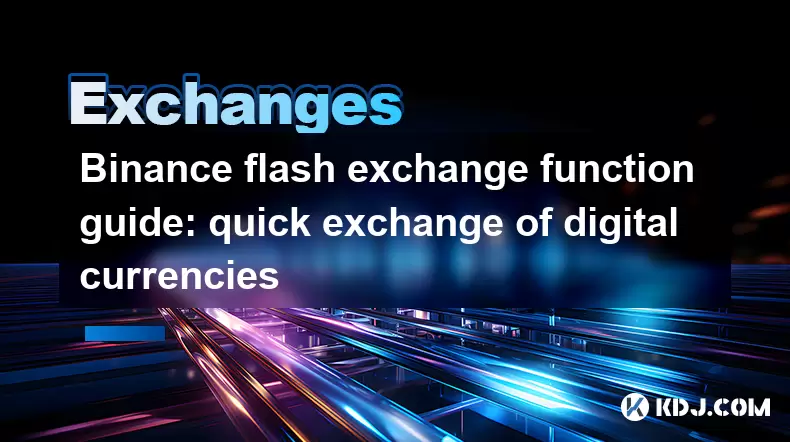
Binance flash exchange function guide: quick exchange of digital currencies
Jun 23,2025 at 12:29pm
What is the Binance Flash Exchange Function?The Binance Flash Exchange function is a powerful tool designed to allow users to instantly swap between supported cryptocurrencies without the need for placing traditional buy/sell orders. This feature simplifies the trading process by offering a direct exchange mechanism, eliminating the requirement to conve...

Binance spot market analysis: seize the best time to buy and sell
Jun 19,2025 at 04:56pm
Understanding the Binance Spot MarketThe Binance spot market is one of the most popular platforms for cryptocurrency trading globally. It allows users to trade digital assets at current market prices, making it essential for traders aiming to buy low and sell high. Unlike futures or margin trading, spot trading involves direct ownership of the asset aft...

Binance fund management secrets: reasonable allocation to increase income
Jun 22,2025 at 02:29pm
Understanding Binance Fund ManagementBinance fund management involves strategic allocation of your cryptocurrency assets to optimize returns while managing risk. The key to successful fund management lies in understanding how different investment options on the Binance platform can be utilized to create a diversified portfolio. This includes spot tradin...

Binance trading pair selection skills: find the best buying and selling combination
Jun 23,2025 at 02:49am
Understanding the Basics of Trading Pairs on BinanceBefore diving into trading pair selection skills, it's essential to understand what a trading pair is. On Binance, a trading pair refers to two cryptocurrencies that can be traded against each other. For example, BTC/USDT means Bitcoin is being traded against Tether. Each trading pair has its own liqui...

Binance new coin mining strategy: participate in Launchpool to earn income
Jun 23,2025 at 11:56am
What is Binance Launchpool and how does it work?Binance Launchpool is a feature introduced by the world’s largest cryptocurrency exchange, Binance, to allow users to earn new tokens through staking. This platform enables users to stake their existing cryptocurrencies (such as BNB, BUSD, or other supported assets) in exchange for newly launched tokens. T...

Binance financial management guide: ways to increase the value of idle assets
Jun 19,2025 at 11:22pm
Understanding Idle Assets in the Cryptocurrency SpaceIn the fast-paced world of cryptocurrency, idle assets refer to digital currencies that are not actively being used for trading, staking, or yield farming. Holding these funds in a wallet without utilizing them means missing out on potential growth opportunities. Binance, as one of the leading platfor...

Binance flash exchange function guide: quick exchange of digital currencies
Jun 23,2025 at 12:29pm
What is the Binance Flash Exchange Function?The Binance Flash Exchange function is a powerful tool designed to allow users to instantly swap between supported cryptocurrencies without the need for placing traditional buy/sell orders. This feature simplifies the trading process by offering a direct exchange mechanism, eliminating the requirement to conve...
See all articles

























































































